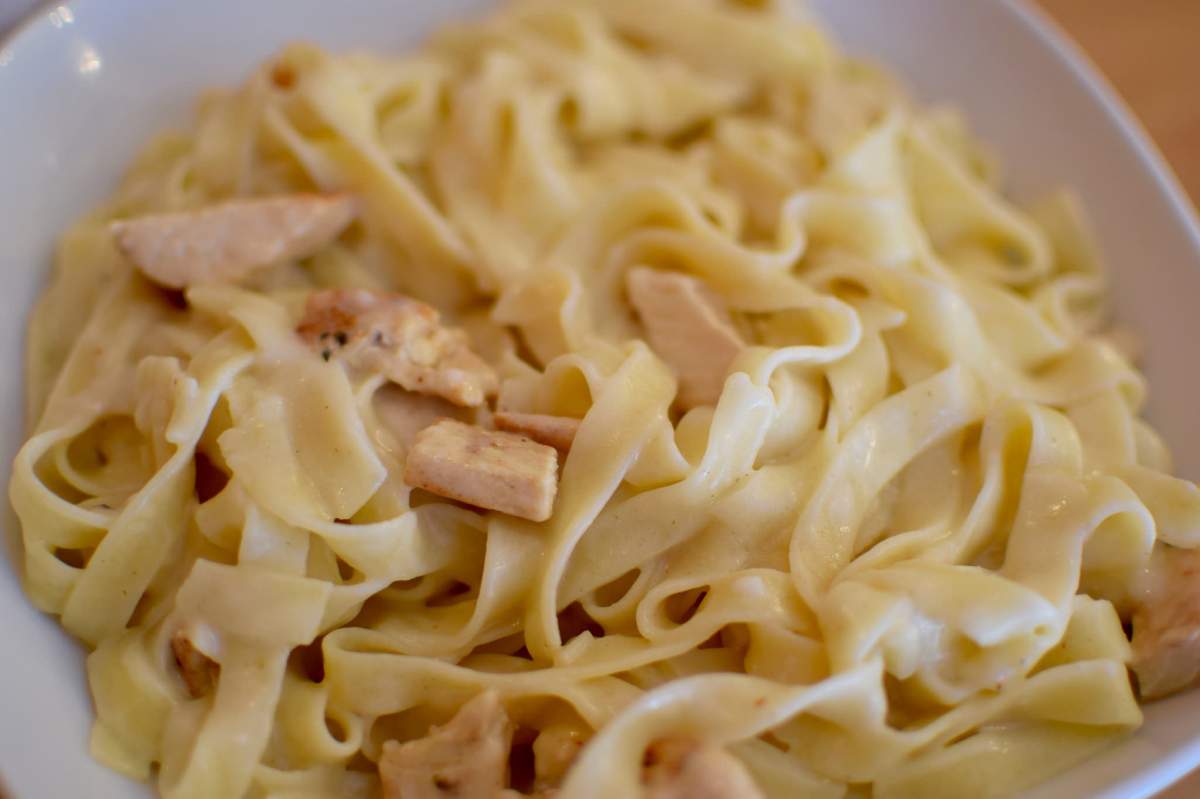
For many foods that you eat, fat--via butter or oil or lard--adds to the food's tastiness, and occasionally acts as a binding agent (think gravies and sauces and some baked goods). When a manufacturer making reduced-fat food prototypes, their trained test testers are asked to break down the eating experiences of these foods with specialized vocabularies.
Residual Dairy Mouth Coating
For instance, a panel at the firm, National Starch rated attributes like "slipperiness," "surface grain on back of spoon" and "residual dairy mouth coating" for a new low-fat Alfredo sauce. But how are reduced-fat or fat-free foods made?
Often it involves never putting the fat in to begin with. So, a low-fat spread may include skim milk. But using low-fat ingredients often leaves the food not quite as tasty and with noticeable texture issues.
To patch texture problems, manufacturers include additives and food binders like gums and starches plus water. To make up for the lack in taste, more sugar is used in place of the fat.
Spiking Blood Levels, Increased Risks Of Heart Disease
In order to keep consumers satisfied, more sugar is often added to our low-fat ice creams, mayonnaises, and the like. What results are highly-processed low-fat foods.
In the end, these foods often have similar calorie counts to the original, fatty versions. And all that sugar can spike blood sugar levels, and increase the risks of heart disease and diabetes.
It‘s worthwhile to note that we all need some fats in our diet. They‘re tasty yes but also do much more than supply calories.
For one thing, fats in our diet absorb vitamins A, D, E, and K, all of which bolster our ability to fight infections, and influence our bone health. Perhaps, be skeptical of claims by food fixers in your search for a balanced diet.
Want to keep reading about how our food gets made? Click here to read about how no sugar sodas stay sweet.Â
Thank you to Victoria M. Getty for reviewing this episode's script!
Sources And Further Reading:
- Bomgardner, Melody M. "Call In The Food Fixers." Chemical & Engineering News. October 30, 2011. Accessed April 3, 2018.
- Brown, Judith E. (2017) Nutrition through the Life Cycle, 6th ed., Cengage Learning, Boston, MA.
- Torrens, Kerry. "The truth about low-fat foods." BBC:Good Food. Accessed April 3, 2018.
- "Cover Alfredo Taste Tester Results." Chemical & Engineering News. October 30, 2011. Accessed April 3, 2018.









